
Arrupe graduates. Photo courtesy of CTB
A new college model that helps underserved, first-generation or undocumented students receive a four-year degree and navigate higher education hopes to plant its seeds in universities across Southern California.
The Come to Believe Foundation (CTB) is a nonprofit organization that presents four-year universities with a model and framework that helps them develop and launch two-year college programs that provide pathways for underserved students to receive an associate degree via a program embedded within the university.
Imagine being unable to get into the school of your dreams because of certain academic requirements you had trouble meeting due to your financial, social or personal circumstances, which is often a reality for low-income, undocumented or homeless Latinos and other people of color. What happens then? Do your dreams of pursuing a career fade away along with the possibility of stepping into your dream college straight out of high school? Do you attend a community college that is overcrowded and underserved and lose your motivation in your first or second year?
The CTB model aims to dismantle the possibility of any of those circumstances. With CTB, four-year universities can construct their own two-year colleges, opening the doors and making them accessible to students without the typical credentials required to attend selective universities. Students will be part of the university’s college program with access to university facilities and other resources, both from CTB and the university itself. Students attend classes on the campus of the host institution and benefit from the resources, such as the recreation center, library and additional academic support available at the larger university.
CTB’s model provides students with small classes, dedicated faculty advisors, mental health services, generous financial aid and additional support for students to successfully and confidently navigate higher education. Students take classes at the same level of instruction they would at a selective four-year college or university. Class sizes are purposefully small and each student has a faculty advisor at 20 to one ratio to provide personalized support. The CTB’s model provides students with breakfast and lunch, access to a food pantry, a financial aid officer, full-time social workers laptops for schoolwork and more.
CTB was founded by Father Steve Katsouros, who is now the president and CEO. From 2014 until August 2020, Fr. Katsouros served as the founding dean and executive director of Arrupe College at Loyola University Chicago, where CTB was first developed. He was inspired to create CTB after his position as dean showed him firsthand the way students from underserved communities often lack the academic credentials or financial means required to attend selective colleges and universities. “The students come to believe that they belong in higher education. They come to believe in themselves. And finally, we are seeing universities coming to believe that yes, thesestudents are very much worthy of the investment,” Katsouro said.
He said students often enroll at institutions that don’t offer the support they need to receive a degree. As a result, many students incur debt but don’t graduate. He wanted to create a program that modeled holistic wrap-around services for students, especially those of first-generation, mixed, or undocumented status and low income.
Since then, the program has been successful. At Arrupe, students graduate at more than four times the national average and 90% of students graduate without any debt. In addition, more than 80% of graduates from CTB model colleges transfer to four-year schools, and 75%t graduate with a bachelor’s degree.

Carlos Martinez, who is of Mexican and Peruvian descent and grew up in San Luis Potosi, Mexico was part of the first-ever CTB program within Arrupe College. Photo courtesy of Zach Bolinger
Carlos Martinez, who is of Mexican and Peruvian descent and grew up in San Luis Potosi, Mexico, was part of the first-ever CTB program within Arrupe College, which allowed him to graduate from Loyola University in Chicago in 2021 with a degree in communications.
Carlos is the co-founder of his own non-profit called Serving People with a Mission, where he seeks to provide high school and college students with leadership development and community service programs. After a couple of years and many jobs, he landed back in the place that, to him, gave him the confidence as a first-generation student to obtain a career and pursue his dreams.
Today, after being one of the many students in the initial program, he is the special projects manager for CTB.
“I fell in love with the whole process of CTB at Arrupe College, the values, and just the community aspect I felt. When I got accepted into the program, my mom was the one supporting me. She was telling me to be smart about it, save my money, get my associate degree, and I was able to do all of those things,” Martinez said. “It's very important to have programs that really understand the needs of first-generation, undocumented students, giving them the resources to not only be successful academically, to get good grades, to get a [high] GPA, to get the knowledge, but also to help continue onto whatever it is you want to do with your life after the program, whether it is continuing your education, starting a job or starting a business.”
For Martinez, one of the most important things in CTB’s framework is to meet students where they are, both academically and in their lives outside of school. “Many of us have to survive and have to work very hard to meet our needs. My mom had to work a ton. She wasn't able to provide money for me personally to go to college. She had to just figure out all the bills at home, so I had to figure out ways to pay for school. Thanks to this program, I was able to do that. I was able to also get a job on the side, a part-time job, and help my mom at home as well,” he said.
Samuel Adams, Chief Operations Officer at CTB, said that providing Latinos and other communities with avenues to higher education has always been a key component of CTB’s vision. According to CTB and Adams, more than 90% of students at CTB model colleges identify as students of color.
In addition, CTB’s model colleges graduate students at four to six times the national average for two-year colleges and more than 70% of CTB model college students who go on to a four-year program graduate in five years or less.

Carlos Martinez, Father Steve Katsouros and Samuel Adams. Photo courtesy of CTB
“The program is really designed to serve local students, students from the surrounding area who wouldn't otherwise be able to attend the college. It's a two-year program that covers the first two years of a four-year degree, the general education requirements, the intro years of a bachelor's degree program. The goal is to get students that academic preparation that they need later on, but also to surround them with a lot of wraparound support,” Adams said.
New higher education data released this February by the Community College Research Center (CCRC) at Teachers College, Columbia University; the Aspen Institute College Excellence Program; and the National Student Clearinghouse Research Center showed that across the United States, only about a third of students starting in community colleges transfer to four-year schools, and only 16% earn a bachelor’s degree within six years.
The study is the first of its kind to aggregate transfer rates and outcomes by student subgroups, finding that low-income (11%), older (6%), Black (9%) and Latino (13%) students transfer and complete bachelor’s degrees at even lower rates than students overall.
“Too many students are failed by policies and practices that dictate whether and how effectively students transfer from community colleges to universities, particularly students from historically underserved groups,” said Tatiana Velasco, lead author of the reports and Research Associate at CCRC. “We hope that states, systems, college leaders and practitioners see in this report a reason to improve those outcomes to help more students from all backgrounds succeed in transferring and attaining bachelor's degrees that will advance their knowledge and career prospects—while helping employers address their talent needs.”
In 2023, Butler University, a private university in Indianapolis, Indiana and the College of Mount Saint Vincent, a Catholic university in Riverdale, New York, also adopted CTB’s educational model.
Although CTB’s model is not yet available on the West Coast, the need is substantial.
Latino adults have the lowest rate of degree attainment of all of California’s racial and ethnic subgroups, with roughly 14% holding a bachelor’s degree, according to the California School Boards Association. The association also states that most Latino students who enroll in college start in the California Community Colleges (CCC) system. Today, almost half (45%) of all students in the state are enrolled in community colleges. In the 2018–19 school year, nine out of 10 of the state’s Latino undergraduates were attending a public college or university. 72% were attending a CCC, 14% were at a CSU, and 4% were at a UC. Another 4% were at a nonprofit and 6% attended a for-profit school.
In Los Angeles, the story is not that different. According to the 2022 U.S. Census, educational attainment in Los Angeles County is low, especially among Latinos. Although 64.7% of Latinos in L.A. County graduate college, only 16.5% obtain a bachelor's degree or higher. This is much lower than other groups, such as the Black community, with 26% having a bachelor's degree and the Asian community, with 53% obtaining a bachelor's degree.
Adams told CALÒ News that they are currently exploring with the city of San Diego to see if a CTB institution would be fit for that community. “As we think about bringing [the] CTB model to colleges [in] the broader community across the United States, we think about major metropolitan regions where there is a lot of need. These are places that have strong Latino communities, places like Los Angeles. We talk and try to connect with leaders in that community that also want to strengthen the Latino community there and want to explore how this could serve important community needs within that region as well,” he said.
Adams explained that new faculty and teachers are hired specifically for the CTB program within the university. “In order to start a college like this, faculty and staff are hired new. So they're brought in specifically to work at this new college. And we find that it's really important that these colleges work well when you have dedicated faculty and staff that feel like this is their mission and professional goal to support students that wouldn't otherwise be able to have access to an institution like this,” he said.
Adams added that the university that obtains the CTB model is offered support, grants and fundamental tools to make the two-year college within their campus a reality. The university, as the host, can give its own name to the college. The College of Mount Saint Vincent named their two-year college, which is part of the CTB model, "Seton College” after the Sisters of Charity’s founder, Saint Elizabeth Ann Seton. Students that are part of a CTB-hosted two-year college obtain transferable pathways, meaning that once students earn two years of credits within the college, those credites are fully transferable to a bachelor’s degree, which can be used at the host university or any other university outside of that.
CTB works to identify and engage potential host institutions that are aligned with CTB’s values and vision. CTB’s criteria for potential hosts include:
Alignment with social justice values
Academic reputation and standing
Location and access for commuter students in the target income demographic
Access to need-based state aid funding
Fundraising capacity and financial sustainability
Commitment from institutional leadership
Adams said the CTB model is not always a good fit for all universities, as its services are created to be accessible to communities that are in great need. The host institutions are then introduced to CTB’s grant programs, which help facilitate the creation of the colleges.
“Once the university understands the model, we help them figure out if this could work in their community. You can't just do a one-size-fits-all approach. You have to figure out how to serve the communities within each institution and surrounding areas,” he said. “We help them figure out things like, where might the students come from? What are community organizations or community leaders that can serve as advocates for something like this? Is there a strong need for a program like this? Or are there other programs that might be serving a similar need? We want to make sure it’s a great fit that could help the communities in those areas.”
To learn more about CTB, click here.

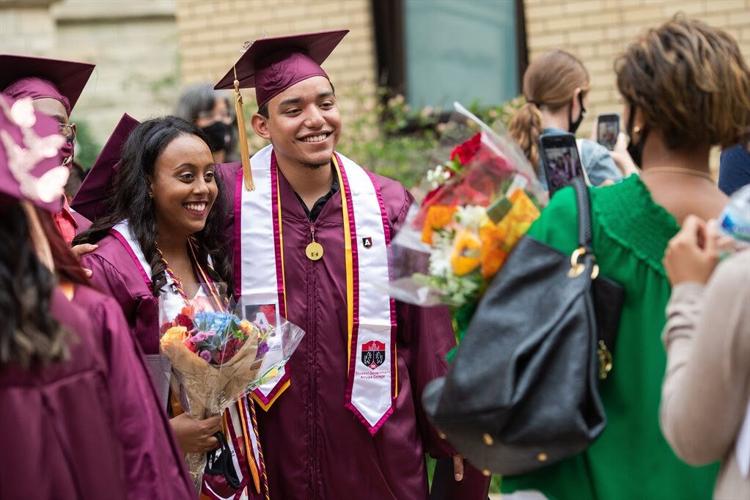

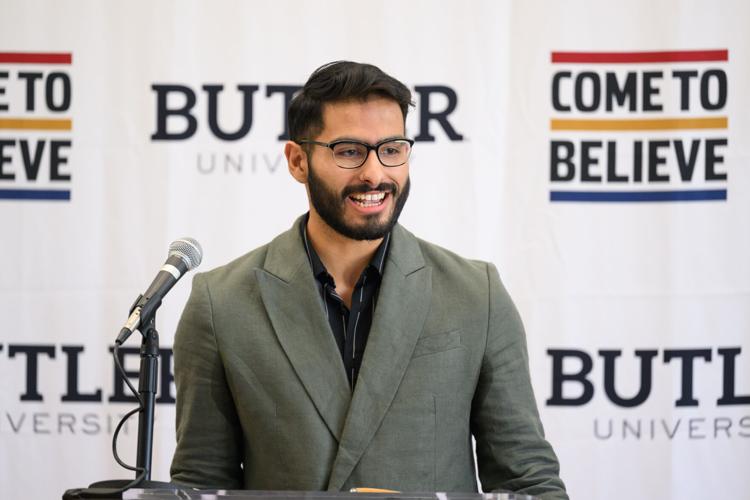
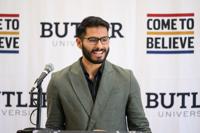
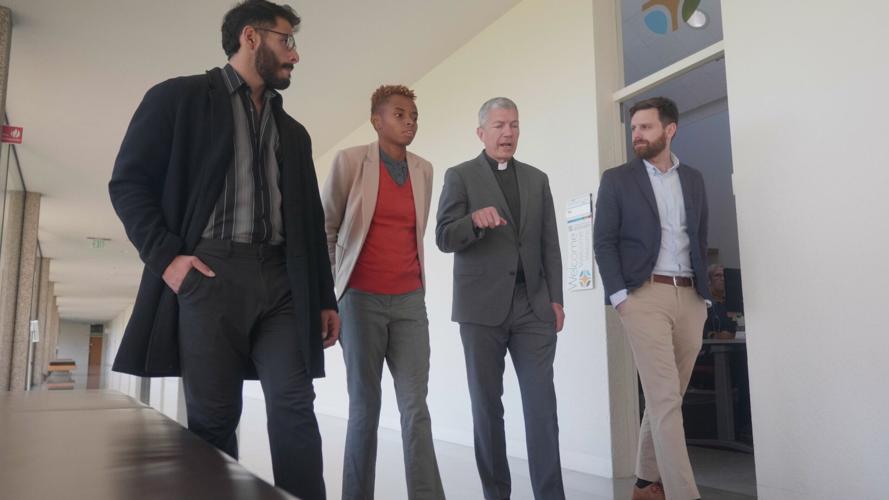


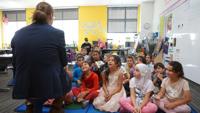






(0) comments
Welcome to the discussion.
Log In
Keep it Clean. Please avoid obscene, vulgar, lewd, racist or sexually-oriented language.
PLEASE TURN OFF YOUR CAPS LOCK.
Don't Threaten. Threats of harming another person will not be tolerated.
Be Truthful. Don't knowingly lie about anyone or anything.
Be Nice. No racism, sexism or any sort of -ism that is degrading to another person.
Be Proactive. Use the 'Report' link on each comment to let us know of abusive posts.
Share with Us. We'd love to hear eyewitness accounts, the history behind an article.